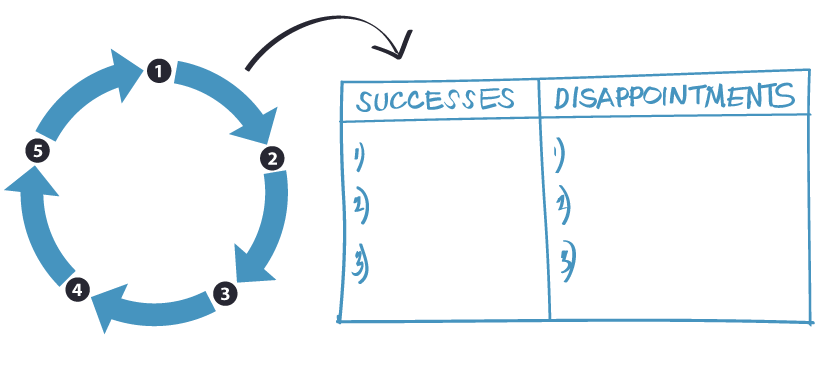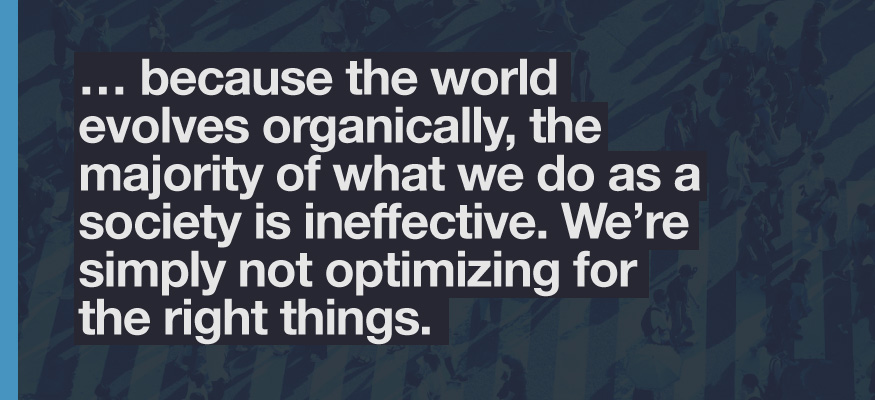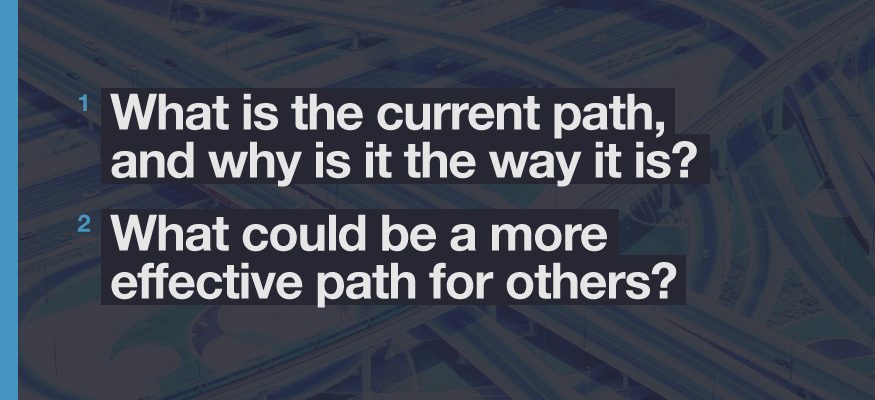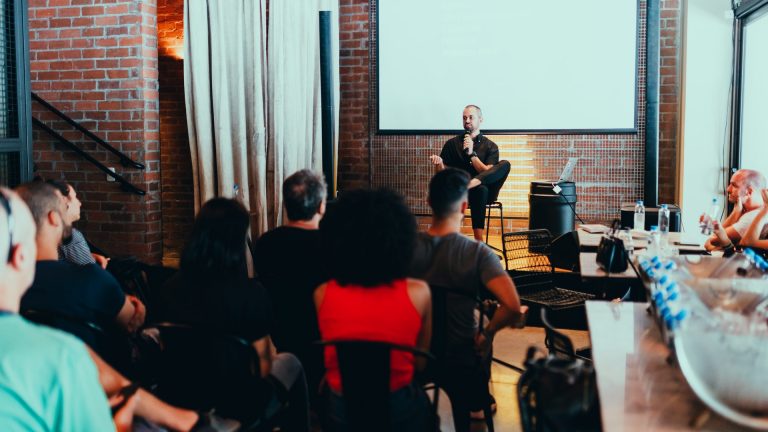- What the flywheel concept is and how you can apply it to your life.
- How to build a flywheel of your own.
- How to use your flywheel to improve your life and the lives of those around you.
When you look back at the most successful moments in your life, what got you there? Are you able to trace it? Was it one giant leap or the accumulation of many incremental steps that helped you experience those moments?
In his book, “Good to Great,” Jim Collins introduced the concept of a flywheel. A mechanical flywheel is a heavy revolving wheel in a machine that is used to increase the machine's momentum.
He asks the reader to imagine themselves tasked with rotating the flywheel on its axle for as long and fast as possible. As you push the flywheel forward, it moves slowly, barely noticeable at first.
You persistently push with a considerable amount of effort, and eventually, the flywheel completes a full rotation. You continue pushing, and the flywheel starts to move faster, completing another rotation. With persistent effort, the flywheel steadily gains momentum, rotating at an ever-increasing speed.
At a certain point, your efforts are rewarded as the momentum of the flywheel takes over and it begins moving forward under its own steam. At this point, your job becomes easier even as the flywheel moves faster.
The flywheel symbolizes a compounded investment of effort. It becomes impossible to say which individual push caused the flywheel to move so fast. For Collins, it wasn’t the first push or the hundredth push. It was the combined effort of each push that set the flywheel spinning, growing exponentially faster as it went.
We’ve allowed the way transitions look from the outside to drive our perception of what they must feel like to those going through them on the inside. From the outside, they look like dramatic, almost revolutionary breakthroughs. But from the inside, they feel completely different, more like an organic development process.
Jim Collins
Collins’ applications for his theory have been used with great success in the business world. He references Amazon’s famous flywheel, which has continued to drive that business’ success, cluttering up the doorsteps of homes around the world.
This article, though, is about creating your own personal flywheel. Luckily, the same principles apply.
In personal flywheels, just as in business flywheels, the completion of one step should naturally lead to beginning the next step. The completion of the final step will lead back to the first step. So, as long as you continue doing a good job with each of those steps, the flywheel will continue to turn faster and faster.

The entire series of events becomes easier with each rotation. Indeed, the flywheel is accelerated thanks to the intrinsic connections between each step. It’s a reinforcing loop.
If you’re able to step back from the flywheel and see how each step impacts the following one, you’re able to zero in on why you succeed. Over time, you can build your own flywheel and empower yourself for future success.
Business Flywheel Vs. Personal Flywheel
So how do you make a flywheel of your own?
In his monograph, Jim Collins lists the steps as:
- Create a list of significant replicable successes your enterprise has achieved. This should include new initiatives and offerings that have far exceeded expectations.
- Compile a list of failures and disappointments. This should include new initiatives and offerings by your enterprise that have failed outright or fell far below expectations.
- Compare the successes to the disappointments and ask, “What do these successes and disappointments tell us about the possible components of our flywheel?”
- Using the components you’ve identified (keeping it to four to six), sketch the flywheel. Where does the flywheel start—what’s the top of the loop? What follows next? And next after that? You should be able to explain why each component follows from the prior component. Outline the path back to the top of the loop. You should be able to explain how this loop cycles back upon itself to accelerate momentum.
- If you have more than six components, you’re making it too complicated; consolidate and simplify to capture the essence of the flywheel.
- Test the flywheel against your list of successes and disappointments. Does your empirical experience validate it? Tweak the diagram until you can explain your biggest replicable successes as outcomes arising directly from the flywheel, and your biggest disappointments as failures to execute or adhere to the flywheel.
- Test the flywheel against the three circles of your Hedgehog Concept. A Hedgehog Concept is a simple, crystalline concept that flows from deeply understanding the intersection of the following three circles: (1) what you’re deeply passionate about, (2) what you can be the best in the world at, and (3) what drives your economic or resource engine. Does the flywheel fit with what you’re deeply passionate about—especially the guiding core purpose and enduring core values of the enterprise? Does the flywheel build upon what you can be the best in the world at? Does the flywheel help fuel your economic or resource engine?


Of course, the steps outlined above cater to creating a business flywheel. We’re not saying you should run your life like Amazon runs its warehouses, but the principles apply equally to creating a personal flywheel.
What Does “Flywheel” Mean For You?
When creating a flywheel for your personal life, begin by understanding what the flywheel is actually compounding. Are you accruing money? Or is it something more esoteric like gaining new experiences? Maybe it’s simply accumulating as many hours on the beach as possible.
Compounding can be applied to your career, your personal relationships, or gaining knowledge. As Naval Ravikant said, “All the benefits in life come from compound interest — money, relationships, habits — anything of importance.”
The center of your flywheel should contain a statement that explains exactly what you want to compound. In my case, after doing the above seven-step exercise, I realized I’m looking to compound how to pioneer and share unique ways of solving problems.
To help break it down, here’s my own flywheel.
Curiosity
I personally find that personal flywheels almost always start with curiosity.
Generally speaking, I seem to find success when I begin thinking about different ways to approach a problem.
Whether it’s a better path to education, a better path to making money, or a better path to staying fit, my curiosity has served me well.
That same curiosity has led me to the belief that, because the world evolves organically, the majority of what we do as a society is ineffective. We’re simply not optimizing for the right things.

Should we still be working for 70 years and then retiring? Maybe you should be working and saving money during your teenage years, when you have very little expenses, as an example.
So, I’ll learn about something in order to get better at it and optimize for specific outcomes.
Spend Time Learning Effectively
In his blog, James Clear sums up the concept of first principles thinking nicely, saying “First principles thinking is the act of boiling a process down to the fundamental parts that you know are true and building up from there.”
Clear tells the story of Elon Musk and his desire to travel to Mars. Musk visited a number of aerospace manufacturers only to realize that the cost of buying a rocket made his vision prohibitively expensive.

But Musk began to think about the problem from a different angle. Going back to first principles, he looked at the raw material costs to build a rocket and realized it was significantly lower than the ticket price. “It turned out that the materials cost of a rocket was around two percent of the typical price,” Musk said.
Musk decided to create his own company, which could buy the materials and build its own rocket. That company was SpaceX.
This is just to say that first principles thinking is a very powerful tool. So, once I fully understand an outcome, I will ponder it in my journal. I begin from first principles: What is the current path, and why is it the way it is? What could be a more effective path for others?

How can we use network effects and the internet to create a better path to an outcome? What other mental models can I apply to this to adjust the answer?
This is how I spend time learning effectively.
I have found that isolation helps with this stage. Being alone allows you to look at the ideas in creative new ways. As Isaac Asimov said, “as far as creativity is concerned, isolation is required.” And I have found that largely to be true.
Systematize and Iterate
In order to ensure that my ideas are actually useful, I take what I’ve learned and apply it to my life in the form of a system. These are usually not technological in nature, rather they represent specific constraints and procedures around those constraints.
In order to create the systems, I will write an essay about the application and create a basic system in Coda to use daily for myself.
Share The Concept With Loved Ones

I apply those systems to my work life as well as my personal life and iterate on the system as I go. I’ll then discard it if I find it unsuccessful. If I feel it is successful and replicable, I’ll try to apply these systems to my immediate network and pose it to a few close friends, my kids, my wife. If it’s not too crazy, usually someone will volunteer…
Then, based on their feedback, I’m able to iterate those systems into something more substantial, more permanent (or I abandon them entirely because they turned out to be dumb after all).
Share The Concept With The World For Free
As a person that buys businesses, my leverage tends to exist in the context of those businesses. If certain things work, I will ask leadership teams to try them out.
If it’s about parenting, relationships, entrepreneurship, or investing, I’ll share it with the community if I think it can energize lives.
By distributing the resource and replying to questions people may have, I’m able to take the iteration and learning even further. The feedback from this last step naturally leads back to the first step as it creates many interesting conversations and gives me a nice dopamine kick.

Acquira: An Origin Story
In many ways, my personal flywheel is what led to the creation of Acquira.
My flywheel led me to wonder, what was the most effective path to financial freedom and autonomy? After years of iteration, I came to the answer of acquisition entrepreneurship.
Deven and I then designed a replicable system that others could follow, and, Acquira was formed.
It led us to create a system in which we provide capital, training, and systems to help others acquire businesses with the confidence and support they need to achieve their own financial freedom and autonomy. Something you can learn more about in our Acceleration Gauntlet.
Conclusion
The search for the perfect flywheel is an unending one. It’s something that I encourage everyone on our team to discover and to make a flywheel of their own. It’s also important to note that you don’t simply follow your flywheel for a short period of time. In order to really see the benefits, you need to stay with the flywheel for years.
We often spend a lot of time with people helping them determine what their own flywheel will consist of. It helps them get to know themselves better which has endless benefits for our organization and their own lives.
If everyone spends more time trying to understand themselves, their strengths, and their weaknesses, the world would be a better place.
So let your flywheels spin.
Key Takeaways
- Success is found through the cumulative effect of incremental steps. It’s impossible to say what step ultimately led to success.
- An effective flywheel takes a large time investment.
- Iterate, tweak, and adapt your systems in order to optimize them.
Can you think of a particular success or failure that you learned from? Please share with us in the comments.
If you found this post useful, please share it with your friends. We believe it can be very helpful.
And again, if you're interested in starting your own entrepreneurial journey, check out our Acceleration Gauntlet.
Acquira specializes in seamless business succession and acquisition. We guide entrepreneurs in acquiring businesses and investing in their growth and success. Our focus is on creating a lasting, positive impact for owners, employees, and the community through each transition.



